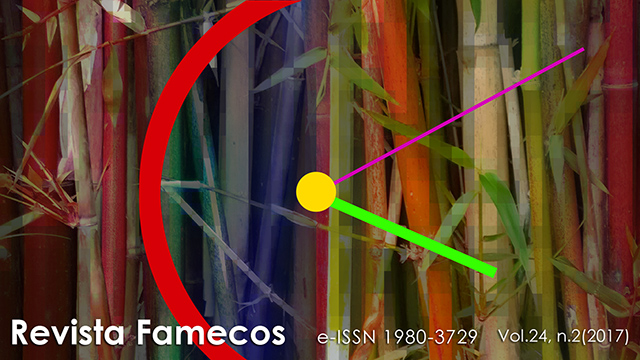Media and innovation in Simmel, Benjamin and McLuhan
DOI:
https://doi.org/10.15448/1980-3729.2017.2.25791Keywords:
Medium, Novitas, Everyday lifeAbstract
This paper aims to investigate the textual relations that link the thought of Simmel (Philosophie des Geldes and Die Grosstädte und das Geistesleben), Benjamin (Das Passagen-Werk) and McLuhan (Understanding Media) in terms of a common reflection on modes of technological innovation. Through a close reading of the texts, the reflection unfolds in three complementary parts: the reconstruction of the tradition mentioned above, accomplished through a focus of the traits of continuity that tie into an organic corpus of the three authors; a survey on the concept of medium and his epistemological implications; the case of photography, emblematic, in this study, for the technological innovation. The elements which arise from this reflection – medium and perception, medium and time, medium and habits, medium and social forms – show in detail an idea of communication based on a new image of history and nature, observed in their mutual relation of competition and exclusion.Downloads
References
ABRUZZESE, A. Lo splendore della Tv. Origini e destino del linguaggio televisivo. Genova: Costa & Nolan, 1994.
_____. Lessico della comunicazione. Roma: Meltemi, 2003.
_____. Punto zero. Il crepuscolo dei barbari. Roma: Sossella, 2015.
BENJAMIN, W. Origem do drama trágico alemão. São Paulo: Brasiliense, 1984.
_____. Passagens. Belo Horizonte/São Paulo: UFMG/Imprensa Oficial do Estado, 2007.
_____. A obra de arte na era de sua reprodutibilidade técnica. Porto Alegre: L&PM Editores, 2014.
CASTELLS, M. The Rise of the Network Society. Oxford: Basil Blackwell, 2001.
DI FELICE, M. Paisagens pós-urbanas: o fim da experiência urbana e as formas comunicativas do habitar. São Paulo: Annablume, 2009.
DI FELICE, M.; TORRES, J. C.; YANAZE, L. K. H. Redes digitais e sustentabilidade - as interações com o meio ambiente na era da informação, São Paulo: Annablume, 2012.
JENKINS, H. Convergence Culture. New York: New York University Press, 2006.
MAFFESOLI, M. Au Creux des Apparences: Pour une Éthique de l’Esthétique. Paris: Plon, 1990.
MCLUHAN, M. The Gutenberg Galaxy: The Making of Typographic Man. Toronto: University of Toronto Press, 1962.
_____. Os meios de comunicação como extensões do homem. São Paulo: CULTRIX, 1996.
MORETTI, F. Opere mondo. Saggio sulla forma epica dal Faust a Cent’anni di solitudine. Torino: Einaudi, 1994.
PERNIOLA, M. Il sex appeal dell’inorganico. Torino: Einaudi, 1994.
SIMMEL, G. As Grandes Cidades e a Vida do Espírito. Covilhã/Portugal: Universidade da Beira Interior, 2009.
_____. Psicologia do dinheiro e outros ensaios. Lisboa: Edições Texto & Grafia, 2009.
VALERIANI, L. Dentro la trasfigurazione. Il dispositivo dell’arte nella cibercultura. Genova: Costa&Nolan, 1999.
Downloads
Published
How to Cite
Issue
Section
License
Copyright
The submission of originals to Revista Famecos implies the transfer by the authors of the right for publication. Authors retain copyright and grant the journal right of first publication. If the authors wish to include the same data into another publication, they must cite Revista Famecos as the site of original publication.
Creative Commons License
Except where otherwise specified, material published in this journal is licensed under a Creative Commons Attribution 4.0 International license, which allows unrestricted use, distribution and reproduction in any medium, provided the original publication is correctly cited.






